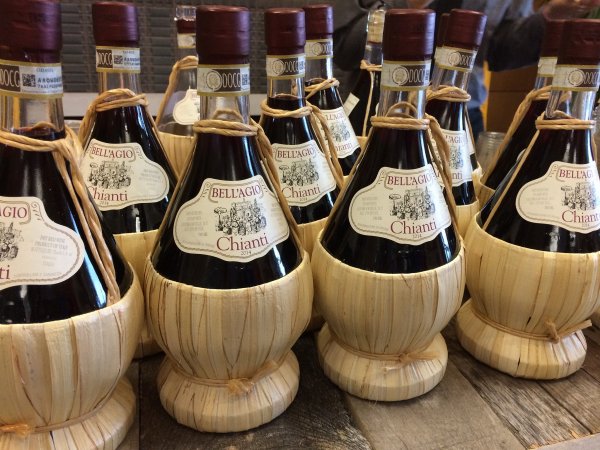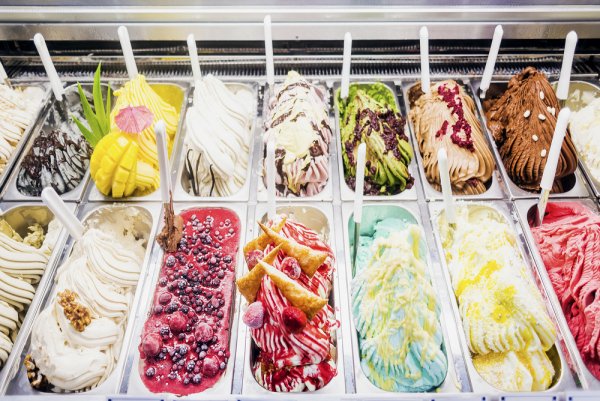Food and Drink: National Cuisine
Italian cuisine is widely known for influencing the cuisine of other countries, rather than for being influenced. Moorish flavors are evident in some Sicilian dishes, however, and areas that border Austria and former Yugoslavian countries also have some common foods with neighboring areas. Other than that, geographic, climatic, and social factors are the strongest influences on the food. Pizza and pasta are known almost worldwide, and the Italian style of cooking has helped shape national cuisines throughout the Americas and in much of Europe. Standard Italian methods of cooking and ingredients vary by region and season.
Traditional Staples
Staples include wheat-based noodles (pasta), rice, and yeasted wheat bread. Rice dishes are more common in northern Italy, where risotto—rice simmered with broth and flavored with herbs, cheese, and sometimes meat, vegetables, or cream—are regularly consumed. Wheat-based pastas are served throughout the country, though the shapes of the noodles and the methods of dressing them vary widely from region to region, and even from city to city. Pasta dumplings such as ravioli, agnelotti, gnocchi, and tortellini are filled with seasoned mixtures of cheese, potato, or meat. Cornmeal polenta is another staple in many regions.
Fish is an everyday meal along Italy’s substantial coastline, and beef, veal, lamb, pork, and chicken are also common foods. Other meats such as rabbit, duck, and other types of game are popular in certain areas. Cured pork, such as prosciutto, Italian uncooked ham, pancetta, and bacon are regularly used in many foods. Vegetables are widely consumed, both as dishes in themselves and as ingredients in other foods. Seasonality is considered important. Root vegetables such as potatoes, carrots, beets, and turnips are common, as are leafy greens, artichokes, cardoons, tomatoes, eggplant, squash, and other vegetables.
Important Flavors
Onions and garlic are used throughout the year, and a variety of herbs, including basil, oregano, parsley, sage, bay, and thyme, are important flavorings. Black pepper and red chili powder or flakes are commonly used, but Italian food is rarely sharply spicy. Other seasonings such as saffron and nutmeg, though not as widely used, are considered essential to particular dishes.
Wine, a local product almost everywhere in Italy, is a necessary ingredient in many dishes, both savory and sweet, as well as the most common accompaniment to an afternoon or evening meal. Olive oil and butter are the most widely used cooking oils, though in some parts of Northern Italy, walnut and hazelnut oil are preferred for some purposes. Dairy products, particularly cream and sharper cheeses, are popular as ingredients.
Nuts are more common in sweets than in main courses, though walnuts, almonds and hazelnuts are commonly available. Chestnuts are a longstanding traditional food in areas of northern Italy and are still used in some soups, pastas, and porridges.
Salads, both cooked and raw, are common, as are soups. Main courses are regularly baked, grilled, fried, and stewed. Meals usually end with a small portion of cheese or a piece of seasonal fruit. Sweets are more commonly afternoon snacks. Gelato, Italian semi-soft ice cream, is a favorite throughout the country. Pastries vary more by region, but are often rich with cream, custard, cheese, or nuts.
Copyright © 1993—2025 World Trade Press. All rights reserved.

 Italy
Italy 




